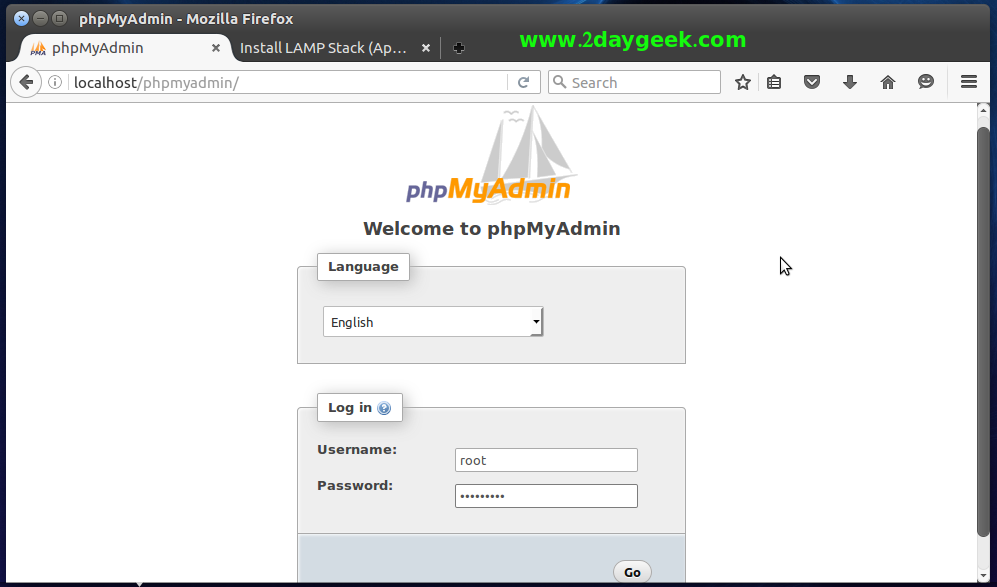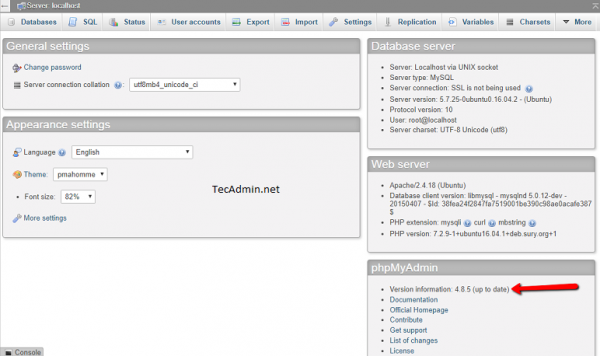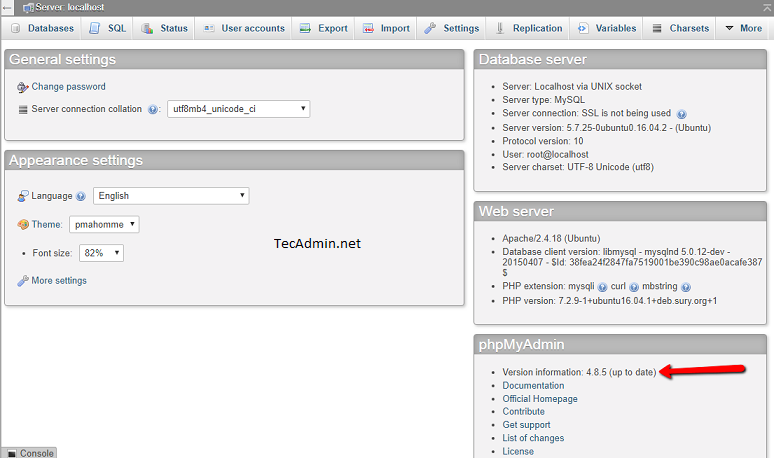

- #UBUNTU PHPMYADMIN INSTALL#
- #UBUNTU PHPMYADMIN MANUAL#
- #UBUNTU PHPMYADMIN SOFTWARE#
- #UBUNTU PHPMYADMIN PASSWORD#
To redo the installation run the following: sudo dpkg-reconfigure -plow phpmyadmin

Should you get a 404 "Not Found" error when you point your browser to the location of phpMyAdmin (such as: the issue is likely caused by not checking the 'Apache 2' selection during installation.
#UBUNTU PHPMYADMIN PASSWORD#
If no users have been setup, try root with no password to login. You should be able to login using any users you've setup in MySQL. Once phpMyAdmin is installed point your browser to to start using it. You can also skip the set up step and go directly to and login with the user and password you set up during install. If you are using Ubuntu 9.04 (Jaunty), there is no need to modify /etc/apache2/nf as the package installer already copied the file nf into /etc/apache2/conf.d directory. To set up under Apache all you need to do is include the following line in /etc/apache2/nf. If you're using Ubuntu 7.10 (Gutsy) or later select Apache2 from the "Configuring phpmyadmin" dialog box.
#UBUNTU PHPMYADMIN INSTALL#
(Note, however, that installation from a package manager often does not work).įrom console: sudo apt-get install phpmyadmin See InstallingSoftware for detailed instructions on using repositories and package managers. Install phpMyAdmin from the Universe repository. To use it, you'll need to install and configure Apache, PHP, and the PHP mysqli extension.
#UBUNTU PHPMYADMIN SOFTWARE#
Really hope this helps someone having the same issue.PhpMyAdmin is a very popular MySQL management software package. I created another user as indicated on the tutorial and was also able the login using that new user. I followed this Tutorial exactly to install phpMyAdmin manually instead of automatically and everything worked perfectly! I was able to open the phpMyAdmin on the browser and even able to login using root and password. I found out i could download phpMyAdmin version 5.0.4 or greater (Basically the latest version) from the official website since it would be more compatible with the MYSQL Version 8.0.22. Basically i had to setup my server by installing Nginx using this Tutorial, then i installed MYSQL Version 8.0.22 using this Tutorial (basically the latest available version - Which usually leads to this error), then i installed PHP7.4 using this Tutorial of which also required me to check the DigitalOcean article to configure the php processor for Nginx using the same Tutorial i used to install Nginx.Īt this point i wanted to install phpMyAdmin, and it failed with the same error, i read every article i could find on Digital Ocean, Stackoverflow and other forums and no solution worked. I needed a server to Host a Laravel application. I really struggled with this issue while setting up a server on Digital Ocean. │ * retry (skip questions) - Immediately attempts the operation again, │ setting) and makes another attempt at performing the operation. │ (including ones you may have missed due to the debconf priority │ * retry - Prompts once more with all the configuration questions │ install other packages until the installation failure is resolved. This will usually also impact your ability to │ reinstall, reconfigure this package, or otherwise manually intervene │ * abort - Causes the operation to fail you will need to downgrade, │ for the right syntax to use near 'IDENTIFIED BY
#UBUNTU PHPMYADMIN MANUAL#
│ syntax check the manual that corresponds to your MySQL server version

│ mysql said: ERROR 1064 (42000) at line 1: You have an error in your SQL The error says: An error occurred while installing the database: If anyone could help me I'd be so grateful! I've also already searched for common questions as trying to fix phpmyadmin files as but every timestamp call is correct without values ( timestamp(value) seems to be wrong). I've already tried to purge the latest phpmyadmin failed installations, but I'm not being able to installing it. I'm quite confused about an error while installing phpmyadmin on a Debian server with MySQL already installed and configured.


 0 kommentar(er)
0 kommentar(er)
